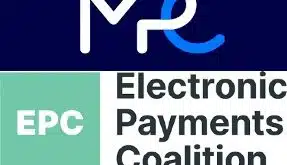Even the most fervent advocate of EMV would have to admit the U.S conversion to chip cards has been a rocky one, especially for merchants. On Thursday, Visa Inc. announced a four-part plan it clearly hopes will remedy at least some of the more acute headaches, including certification backlogs and mounting counterfeit card chargebacks.
MasterCard Inc., too, said it has a plan to ease the certification process but won’t release details until next week.
Under the terms of the liability shift that took place Oct. 1, merchants that can’t process chip card transactions are responsible for payments made on fake cards. That’s a burden formerly shouldered by issuers, and since October a number of merchants have been unpleasantly surprised by a wave of chargebacks hitting them for the first time. In at least one case, a Florida merchant has filed a federal class-action lawsuit over the matter.
Part of Visa’s new policy will stop all chargebacks for counterfeit fraud under $25 from going to acquirers and their merchants, effective July 22. As of October, it will also cap at 10 the number of counterfeit card chargebacks of $25 or more an issuer can send back to merchants on any single card account. Issuers will have to take responsibility for any such chargebacks after that.
The twin moves will cut merchants’ counterfeit chargebacks by 40% and their dollar losses by 15%, Visa estimates. The moves aren’t permanent, however. Visa says both changes will stay in effect until April 2018, by which time more merchants will presumably have installed and activated chip card terminals. “Visa’s actions [Thursday] seek to alleviate the impact on merchants while they work through the transition,” Visa says in a statement released Thursday to explain the new plan.
Another policy change seeks to speed up testing and certification of EMV equipment in stores. The chip card transition in recent months has been ensnarled in delays stemming from the need to certify point-of-sale gear for EMV. Hardware and software must be certified to each processor and network the merchant links to. Until those certifications are complete, merchants can’t switch on EMV devices, leaving them vulnerable to the liability shift.
Visa now says it has “streamlined” its testing procedures to allow acquirers and their merchants to certify more quickly by dispensing with routines that may occur only rarely in the U.S. market. To reflect this change, Visa has reduced its roster of recommended test scripts from about 35 to 14, Mark Nelsen, senior vice president for risk products, tells Digital Transactions News. Visa is also allowing acquirers to take on more discretion in certifying merchants. “Acquirers know their merchants better than anyone, so providing acquirers with the commercial flexibility to self-certify their clients will further reduce certification wait times for solutions that acquirers are confident are ready,” Visa says in its Thursday release.
Both the streamlining and self-certification moves take effect immediately, Nelsen says.
The network adds it is “exploring” a system that would allow acquirers to trade information about testing and certification, so that results of a solution that works for a particular configuration can be shared with other acquirers facing the same configuration with their clients.
MasterCard’s new plan will also tackle the certification backlog. “We are announcing a new EMV terminal testing and certification program that maintains quality and speeds chip adoption by U.S. merchants,” the network said Thursday in a statement.
According to the final part of its plan, Visa will boost its funding for acquirers and value-added resellers seeking to test and certify merchants’ equipment. No dollar figure was released.
“Visa funding will be available to help acquirers with any specific resource constraints they may be facing, as well as to help VARs pre-certify their software solutions in a manner that will significantly reduce the subsequent testing at acquirers by up to 80%,” the release says.
Visa’s new plan won’t likely please merchants completely, but it helps them face fallout from the EMV migration, including “aggressive” chargeback levels from issuers, says Rick Oglesby, president at consultancy AZPayments Group LLC. “It’s a good idea for Visa to move now to alleviate some of the roadblocks standing in the merchants’ way, as well as to alleviate some of the liability,” he notes in an email message. “By design, it won’t completely satisfy merchants, rather it reduces some of the pain associated with the migration, while still keeping the ball rolling.”
More than 300 million chip cards are now in circulation in the United States, and 1.2 million merchant locations are accepting them, with an average of 23,000 merchant locations becoming “chip-ready” every week, according to data Visa released Thursday.





